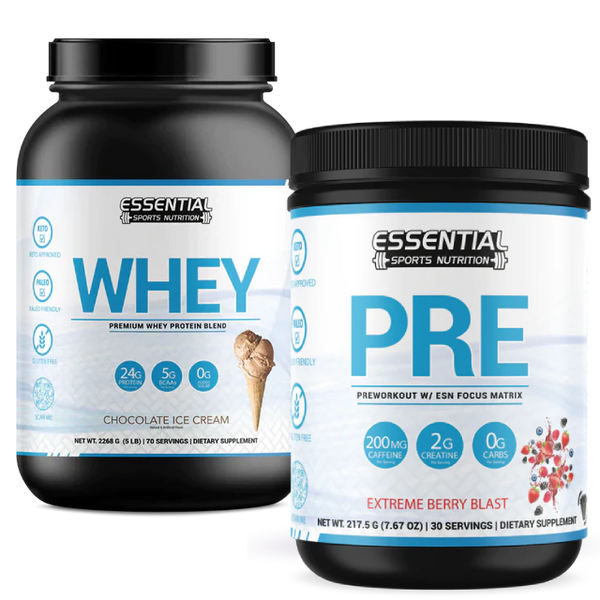Back Exercises: Build A Strong Back for Spine Health & Pain Management
Working your back muscles is vital for a healthy spine. These workouts focus on important areas including the latissimus dorsi, rhomboids, trapezius, and erector spinae. Studies predict that 843 million people worldwide will have lower back pain by 2050. So, back exercises are not just proactive but can also help with general back pain and boost flexibility.
Adding exercises to strengthen your spine can cut down on discomfort, better your stance, and give you a sturdier base for every day. Whether your goal is a robust back or long-lasting spinal wellness, doing these exercises regularly is key. It's a smart move for anyone.

Key Takeaways
- Back muscle exercises target essential muscles to support spine health.
- Regular practice can prevent and manage nonspecific back pain.
- Incorporating these exercises can lead to better posture and reduced pain.
- A strong back enables better movement everyday and boosts overall health.
- Fighting lower back pain can greatly enhance life quality.
Introduction to the Best Back Exercises
Keeping healthy and avoiding low back pain is important. Doing back muscle exercises regularly helps a lot. These moves aim to strengthen your back. This is key for good posture and easy movement.
Back exercises bring lots of benefits. Not only do they make you stronger, but they also help your overall health. Some great activities are bent-over rows, pullups, and back extensions. Each one works on different parts of your back, making sure you get balanced development.
A lot of things we do use our back. So, strengthening it is a smart way to prevent low back pain. The right workouts can lower your pain and help you stay fit.
In the world, low back pain is becoming a big issue. It's expected to impact many by 2050. Doing the right back exercises can make a big difference. They can make your back stronger, reduce pain, and make your daily life better.
Now, let's explore a few top back exercises:
| Exercise | Targeted Muscles | Benefits |
|---|---|---|
| Bent-Over Rows | Latissimus Dorsi, Rhomboids | Increases upper back strength and stability |
| Pullups | Latissimus Dorsi, Biceps | Improves overall upper body strength |
| Back Extensions | Erector Spinae | Enhances lower back endurance and posture |
Warmup for Back Muscle Exercises
Before you start working out your back, doing a warmup is key. It makes sure your muscles are ready. This helps you do better and lowers the chance of getting hurt.
Cardio Warmup
Start with a 5-10 minute cardio warmup. It's great for getting your blood flowing and waking up your muscles. You can jog, walk fast, or ride a bike as part of your warmup. This gets your heart pumping and makes your muscles more flexible for the exercises ahead.
Dynamic Stretching
After your cardio, do dynamic stretches for about 5 minutes. Unlike sitting still, with dynamic stretches, you're moving. These moves copy the exercises you'll do later, getting your back muscles ready. They make you more flexible and improve how far you can move, finishing off your warmup. Try things like twisting your torso, swinging your arms, and kicking your legs.
| Warmup Activity | Duration | Benefit |
|---|---|---|
| Cardio Warmup | 5-10 minutes | Increases blood flow and heart rate |
| Dynamic Stretching | 5 minutes | Improves flexibility and prepares muscles |
Resistance Band Exercises for Back Strengthening

The resistance band pull-apart is key for enhancing your back muscles and shoulder health. It works your upper back muscles well. This is important for keeping a good posture and a strong back.
This exercise targets certain muscles like the rhomboids, rear deltoids, and trapezius. Stand with your feet apart. Hold a resistance band straight in front of you. Pull the band with your arms to the sides, keeping your back muscles in tight control.
Resistance Band Pull-Apart
To do the resistance band pull-apart correctly, here's what you should do:
- Start with a resistance band in front of you, arms straight.
- Pull the band apart slowly to the sides.
- Squeeze your shoulder blades together as you do this.
- Go back to the start slowly to keep the band under tension.
- Do 12-15 reps for a set.
Adding this exercise to your workout helps you have healthy shoulders and a strong back. It also makes your upper body more stable and better at performing everyday tasks.
Dumbbell Back Exercises

Dumbbell back exercises are great for muscle building and a top-notch back workout. The dumbbell bent-over row and single-arm row excel at hitting multiple back muscles. They're also good for fixing muscle imbalances and boosting your overall back strength.
Wide Dumbbell Bent-Over Row
The wide dumbbell bent-over row is key for a great back workout. Stand with your feet hip-width apart and hold a dumbbell in each hand. Bend over at your waist, but keep your back straight and core tight. Pull the dumbbells to your hips, squeezing your shoulder blades at the top.
This works your latissimus dorsi, rhomboids, and rear deltoids. It's a solid muscle builder with the benefit of keeping you in good form.
Quadruped Single-Arm Dumbbell Row
The quadruped single-arm dumbbell row is also crucial. Get on all fours with a dumbbell in your right hand. Keep your left hand and knees on the floor, then row the dumbbell up.
This targets your latissimus dorsi and erector spinae, while improving core strength. Remember to switch sides evenly to avoid muscle imbalances.
| Exercise Name | Targeted Muscles | Description |
|---|---|---|
| Wide Dumbbell Bent-Over Row | Latissimus dorsi, rhomboids, rear deltoids | Stand with feet hip-width apart, bend at the waist keeping your back straight, and pull dumbbells towards your hips. |
| Quadruped Single-Arm Dumbbell Row | Latissimus dorsi, erector spinae, core | Start on all fours with a dumbbell in one hand, row the dumbbell up while maintaining core stability. |
Machine Back Exercises for Advanced Strength
Machine back exercises are important for those looking to strengthen their back. They target multiple muscle groups. A standout exercise is the lat pulldown. It really works your back muscles, making your back stronger and more toned. We will look at the lat pulldown's benefits and how to do it here.
Lat Pulldown
The lat pulldown focuses on the latissimus dorsi and is a main part of back workouts. It's great for developing your back. This exercise also works the trapezius, rotator cuff, posterior deltoids, and biceps. That's why it's a top choice for back exercises with machines.
Follow these steps to do a lat pulldown:
- Put the pad on your thighs so you stay still during the exercise.
- Grab the bar with your hands a bit wider than your shoulders.
- Pull the bar down to your chest, moving your elbows down and back.
- Lift the bar back up, stretching your lats well.
The lat pulldown is great for strengthening your back. It helps you get a strong, defined back. You will see big changes with regular workouts, better back strength, and posture.
Bodyweight Back Exercises
Adding bodyweight back exercises to your routine is great for building muscle strength. These moves work your back without needing any equipment. The suspended row, in particular, is perfect for both the upper and lower back.
Suspended Row
The suspended row is a key TRX workout, great for improving how your back works. It uses your body weight for a challenge that fits everyone. It focuses on making your upper and lower back stronger, working muscles like the latissimus dorsi and trapezius.
You'll need a TRX or something similar to try a suspended row:
- Hold the handles with your palms facing down. Lean back until your body is straight.
- Tighten your stomach and pull yourself up to the handles. Squeeze your shoulder blades together.
- Slowly go back down to the start position.
This move also helps your core and arms, making it a full challenge for your body. Let's see which muscles the suspended row works most:
| Muscle Group | Primary Muscles | Secondary Muscles |
|---|---|---|
| Upper Back | Trapezius, Rhomboids | Rear Deltoids |
| Lower Back | Latissimus Dorsi | Erector Spinae |
| Core | Rectus Abdominis | Obliques |
Adding these exercises can really boost your back's power. The suspended row and others like it not only strengthen your back. They improve your body's balance and overall fitness, too.
Core and Back-Integrated Exercises
Adding core and back exercises can make you stronger and more stable. You get a full-body workout that really challenges you. These exercises help with things like core strength and upper back muscles. It's a well-rounded way to get fit.
Wood Chop
The wood chop exercise is great because you work many muscles at once. It hits your sides, deep belly muscles, shoulders, upper back, and arms. This makes it a top choice for a workout that does it all. By doing wood chops, you boost your core and upper back strength.
To do it, stand with your feet apart and hold a weight with both hands. Lift the weight from one side. Turn your body and bring the weight diagonally across. It looks like you're chopping something. This move really works your core and lifts your upper back strength.
So, why is the wood chop exercise good for you?
| Benefits | Description |
|---|---|
| Core Strengthening | Targets and strengthens the obliques and transversus abdominis. |
| Upper Back Activation | Engages the muscles in the upper back, including the trapezius and shoulders. |
| Integrated Movements | Combines core and upper body strength training for a comprehensive workout. |
| Full-Body Workout | Provides a rigorous workout that involves multiple muscle groups. |
Lower Back Pain Relief Exercises
Lower back pain can be eased by doing special exercises. Two of the best are the bird-dog and plank. They make your lower back stronger and keep your whole spine healthy.
Bird-Dog Exercise
The bird-dog exercise helps lower back stability and reduces pain. Here's how to do it:
- Start on all fours with knees below hips and hands below shoulders.
- Extend your right leg and left arm at the same time, keeping them straight.
- Pause for a moment, then come back and switch to your other arm and leg.
This exercise works your core and back, especially the muscles that support your spine. Doing the bird-dog regularly helps your back feel better.
Plank
Plank is great for lower back strength and spinal support. It works a lot of muscles. Here's how to plank:
- Start face down with toes and forearms on the ground.
- Raise your body to stay straight from head to feet.
- Try to hold this pose for as long as you can, keeping your stomach tight and your back flat.
It targets the abs, lower back, shoulders, and hips. Plus, a strong core and back are key to easing lower back pain and supporting a healthy spine.
| Exercise | Benefits |
|---|---|
| Bird-Dog Exercise | Improves lower back stability, engages core muscles, promotes spine support. |
| Plank | Strengthens abdominal muscles, back extensors, shoulders, and hip flexors, alleviates back pain. |
For less lower back pain and a healthier spine, add these exercises to your regular workout.
Back Muscle Stretches
Stretching is key for taking care of your back muscles. It's especially important after tough workouts that focus on strength. It boosts muscle recovery and lowers soreness while making you more flexible. One way to do this is with knee-to-chest stretches. They aim right at the back muscles.
Knee-to-Chest Stretches
The knee-to-chest stretch is great for your back's health. It's a kind of flexibility training that makes moving easier.
Here's how to do it: lie on your back, flat on the floor, knees bent, feet on the floor. Pull one knee up to your chest slowly, using both hands. Hold this for 20-30 seconds, then switch legs. It's a simple move that really works. It helps avoid muscle soreness and makes your back move better.
Adding back muscle stretches to your routine does a lot of good. It makes you more flexible and helps your workouts be balanced and effective. Think of these stretches as a major part of caring for your back. They keep your muscles healthy and stop injuries.
Advanced Back Strengthening Exercises
Advanced back strengthening means using exercises like the barbell deadlift and good morning. These focus on your back's whole chain and keep your spine healthy. Start with light weights and up the load slowly to avoid injuries.
Barbell Deadlift
The barbell deadlift is key for both upper and lower back, legs, and core. It helps build a strong spine for lifting heavy things. Start light and get stronger over time with practice.
Good Morning Exercise
The good morning targets the lower back, glutes, and hamstrings. It boosts core strength, flexibility and keeps your spine in good shape. Use the right technique to prevent hurting yourself.
Conclusion

Doing different exercises that target your back muscles is key for a strong and healthy spine. This includes warm-ups, using bands or weights, machine work, and using your own body weight. These exercises help not only to build muscle but also to fix your posture, lessen pain, and make your body look better.
Always start with a good warm-up before your exercises. Doing dynamic stretches and a little cardio will get your back ready. Adding resistance band exercises, like pull-aparts, can make your upper back stronger. Dumbbell rows and one-arm moves build even strength.
For more advanced workouts, try barbell deadlifts and good mornings. Using correct form is very important. Make them tougher step by step to keep safe. End each workout with stretches for your back. It helps your body recover and stay flexible.
By sticking to these tips, you'll see your back muscles grow and get stronger. This makes your spine better and boosts your overall life quality. So, it's all about balance and the right kind of focus.
The Importance of Training Your Back FAQs
Q: What are the best exercises to strengthen and build muscle in your lower back?
A: Some of the best exercises to strengthen and build muscle in your lower back include back extensions, deadlifts, hyperextensions, rows, and pull-ups.
Q: How can I effectively train my back muscles at home?
A: You can effectively train your back muscles at home with bodyweight exercises such as Superman holds, reverse snow angels, bridge exercise, and bird dog.
Q: What are the most common causes of low back pain?
A: Common causes of low back pain include poor posture, muscle strains, herniated discs, spinal stenosis, and osteoarthritis.
Q: Are there exercises that can help alleviate low back pain?
A: Yes, exercises such as cat-cow stretch, pelvic tilts, knee-to-chest stretches, and seated spinal twist can help alleviate low back pain.
Q: How important is it to strengthen your back for overall body strength?
A: Strengthening your back is crucial for overall body strength as it supports your spine, improves posture, and helps in daily functional movements.
Q: What are some tips for performing back exercises safely and effectively?
A: Ensure proper form, engage your core muscles, start with lighter weights, and gradually increase intensity to perform back exercises safely and effectively.
Q: Can bodyweight exercises be effective in building a stronger back?
A: Yes, bodyweight exercises like plank variations, supermans, and reverse snow angels can be highly effective in building a stronger back.



























